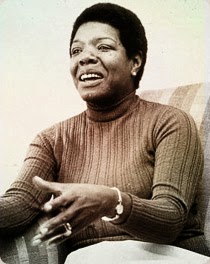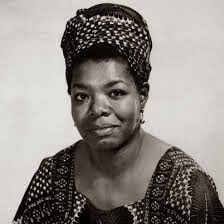College Admission
In Pakistan after two years of high school students get admitted into college. It's duration is two years.
When a student gives his/her matric exams he/she gets a break for four to five months in which they have to learn about other and new stuff and look for colleges for them, It is the students duty to find for a college according to his academic results and progress and his affordability because some colleges are way to expensive and some families could not afford to get into those colleges.
After the student looks for an appropriate college they have to go to the college and get the form which is not that easy because thousands of people are there to get the forms. If you go on time you will sure get the form. After getting the form the he/she has to fill it properly and submit it with all the required documents and information. The student should make sure that all the information is correct and all the documents are original. After the submission of the form a test is taken from the students which is based on particular subjects which the student has learned in the last two or three years. It is important for the students to clear this test in order to get to next step of the admission. If the student clears the test he/she is called for an interview in which the college observes the behaviour and confidence of the student and if the student has the capability to get into that college. The student should be well dressed and tidy for the interview because it all depends on that interview if the student gets the admission or not. The college announces the result in some time and those who have stood up to the college requirements are called to the college for further information and fee.
Her is the list of the colleges in Karachi, Pakistan
Colleges for girls and boys
Government Degree College Gulshan-e-Iqbal block-7, Gulshan Town
D. J. Science College, Dr. Ziauddin Road, Jamshed Town, Karachi
Government Premier College, Block H, North Nazimabad Town, Karachi
Adajee Government Science College, Jamshed Town (Urdu Medium)
Government Zia-uddin memorial [Z.M] Nabi bagh inter science collage [pre-engineering only], Preedy Street, Saddar Town (Morning)
Government Degree College SRE-lll Majeed Stadium Road, Gulshan Town (English Medium)
Government Degree College Malir Cantt., Malir Cantonment (English Medium)
Government College of Commerce & Economics, Saddar Town (English Medium) (Morning and Evening)
Government Aisha Bikhari College, Saddar Town (Morning and Evening)
Government khushak College for Boys, Shah Faisal Town (Morning and Evening)
Government National College, No. 1. (Morning), Gulshan Town (English Medium)
Government girls College Konkar Village, Gadap Town
Government Boys College Korangi-2½, Korangi Town
Government Boys College Landhi-4, Landhi Town
Government Boys College Surjani Town, Gadap Town
Government country College Musa Colony, Gulberg Town (Morning and Evening)
Government College for Boys Asifabad, SITE Town
Government College for Boys Baldia Town, Baldia Town
Government College for Men Nazimabad, Liaquatabad Town (English Medium)
Government Degree Arts and Commerce College Landhi, Landhi Town (Evening)
Government Degree Boys College Gulzar-E-Hijri, Gulshan Town
Government Degree Boys College Jungle Shah, Kemari Town
Government Degree Boys College sabzi mandi, New Karachi Town
Government Degree Boys College Razzaqabad, Bin Qasim Town
Government Degree girls College Shams Pir, Kemari Town
Government Degree College for Boys North Karachi, New Karachi Town
Government Degree College Gulistan-e- Johar, Gulshan Town
Government Degree College Gulshan-e-Iqbal, Gulshan Town
Government Degree College Mango Pir, Karachi, Gadap Town
Government Degree College Murrad Memon Goth, Gadap Town
Government Degree College Quaidabad, Bin Qasim Town
Government Degree Commerce College Malir, Malir Town (Evening)
Government Degree Science and Commerce College Landhi, Landhi Town (Morning)
Government Degree Science and Commerce College, Lyari Town
Government Degree Science and Commerce College, Orangi Town
Government Degree Science College Buffer Zone, North Nazimabad Town
Government Degree Science College 7D-2,Anda Mor
Government Degree Science College Liaquatabad, Liaquatabad Town
Government Degree Science College Malir, Malir Town (Morning)
Government Delhi College, Karimabad (English Medium)
Government Islamia Arts and Commerce College, Jamshed Town (Morning and Evening)
Government Islamia Science College, Jamshed Town (English Medium)
Government College of Technology, SITE Karachi
Government Jamia Millia Degree College, Shah Faisal Town (Morning and Evening)
Government Jinnah College, North Nazimabad Town
Government Monotechnic Institute, New Karachi Town
Government Monotechnic Institute, Orangi Town
.*Dayaram Jethamal Sindh Government Science College (D.J. Science College), Saddar Town (English Medium)
Government National College, No. 2. (Evening), Gulshan Town
Government PECHS Education Foundation Science College, Jamshed Town
Government Polytechnic Institute Lyari Karachi, North Nazimabad
Government Sirajudallah College, Liaquatabad Town (Morning and Evening)
Government Superior Science College, Shah Faisal Town (Morning and Evening)
Haji Abdullah Haroon Government College, Lyari Town (Morning and Evening)
Liaquat Government College Malir, Malir Town (Evening)
MDH College for Boys
Pakistan Shipowners' College, North Nazimabad
Pakistan Swedish Institute of Technology Karachi, Quaidabad
Pakistan Siwtzerland Training Center, Karachi (PCSIR)
Premier Government College, North Nazimabad Town (Morning and Evening)
Quaid-e-Millat Government College, Liaquatabad Town (Evening)
S.M. Government Arts and Commerce College, Saddar Town (Morning and Evening)
S.M. Government Science College, Saddar Town
Zam Zama Grammar School and College, Gizri, Clifton Cantonment
Colleges for girls[edit]
Al-Beroni Intermediate College, Ahsanabad
sir syed government collage for women, Nazimabad
Abdullah Government College for Women, Iqbal Town
APWA Government College for Women, Gulberg Town
Arabic Girls College for Islamic Studies, New Karachi Town
City College for Women, Clifton, Saddar Town
DHA Degree College For Women, Defence Housing Authority
Federal Government Girls College, Karachi Cantonment
Government College for Women F.B. Area, Gulberg Town
Government College for Women Korangi-4, Korangi Town
Government College for Women Korangi–6, Korangi Town
Government College for Women Nazimabad, Liaquatabad Town
Government College for Women New Karachi, New Karachi Town
Government College for Women North Karachi, New Karachi Town
Government College for Women Saudabad, Malir Town
Government College for Women Shahrah-e-Liaquat, Saddar Town
Government College of Commerce and Economics, Saddar Town (Morning)
Government Degree Girls College Ibrahim Hydri, Korangi Town
Government Degree Girls College Sector 11½, Orangi Town
Government Degree College Gulshan-e-Iqbal, Gulshan Town
Government Degree College Malir Cantt., Malir Cantonment
Government Degree College Stadium Road, Gulshan Town
Government Degree Girls College Lines Area, Jamshed Town
Government Degree Girls College Metrovile, S.I.T.E. Town
Government Girls College Al-Noor, Gulberg Town
Government Girls College Baldia Town, Baldia Town
Government Girls College Gizri, Saddar Town
Government Girls College Gulistan-e-Johar, Gulshan Town
Government Girls College Gulshan-e-Iqbal, Gulshan Town
Government Girls College Industrial Area Landhi, Landhi Town
Government Girls College Korangi, Korangi Town
Government Girls College Landhi 3½, Landhi Town
Government Girls College Liaquatabad, Liaquatabad Town
Government Girls College Lyari, Lyari Town
Government Girls College Mahmudabad, Jamshed Town
Government Girls College eastKarachi, New Karachi Town
Government Girls College landhi, North Nazimabad Town
Government Girls College Orangi Town, Orangi Town
Government Girls College P.I.B. Colony, Gulshan Town
Government Girls Commerce and Arts College Malir, Malir Town
Government Girls Science and Commerce College, North Nazimabad Town
Government Girls Science College, Shah Faisal Town
Government Islamia College for Women, Jamshed Town
Government Karachi College for Women, Saddar Town
Government PECHS College for Women, Jamshed Town
Government SMB Fatima Jinnah Girls College, Saddar Town
Hayat-ul-Islam Girls Degree College, Gulshan Town
H.I. Osmania Government College for Women, Liaquatabad Town
HRH Agha Khan Government Girls College, Gulshan Town
Ideal Institute of Business and Technology
Khatoon-e-Pakistan Government College for Women, Gulshan Town
Khurshid Government College for Women, Shah Faisal Town
Liaquat Government College for Girls Malir, Malir Town (Morning)
Metropolis College for Girls, Gulberg Town
Nishter Government Girls College, New Karachi Town
Pakistan Polytechnic Center
Premier Government College for Girls, North Nazimabad Town
Model College for Girls Karachi, North Nazimabad Town
Rana Liaquat Ali Khan Government College of Home Economics, Gulshan Town
Raunaq-e-Islam Government College for Women, Lyari Town
Riaz Government Girls College, Liaquatabad Town
Shaheed-e-Millat Government Degree Girls, Gulshan Town
Sir Syed Government Girls College, Liaquatabad Town
St. Lawrence Government Girls College, Jamshed Town
Khatoon-e-Pakistan Government Degree College, [Stadium Road]
Arabic Girls College For Islamic Studies كلية البنات العربية للدراسات الاسلامية, New Karachi Town
Org Academy
Hudda Butt College
Big Ear University
Imran Khan Govt. College in Gilgit
Institute Of Montessori Education, C87, Block 2, Clifton[1]
Aga Khan Higher Secondary School, Karimabad
Aligarh Institute of Technology, Gulshan Town
Bahria college Karachi (also known as Bahria College N.O.R.E. 1)
Bahria College Karsaz Karachi, Habib Ibrahim Rahmatullah Road, Karsaz
Baqai Medical University
College of Accounting and Management Sciences, Clifton, Saddar Town [1]
Defence Authority Sheikh Khalifa Bin Zayed College, Khayaban-e-Rahat, Defence Housing Authority
Dehli Science and Commerce College (PVT), Karimabad, Karachi
Dow Medical College
dewa college gulshan iqbal information technology and science
Guards Public College, adjacent to Pakistan Coast Guard headquarters, Kiyani Shaheed Road, Saddar
Hamdard College of Science and Commerce, Madinat-al-Hikmah
Institute of Business Education, PECHS
Karachi Medical and Dental College
Liaquat College of Medicine and Dentistry [2]
Meritorious Science College, PECHS [3]
New Century College, Gulshan-e-Iqbal, Gulshan Town
Pakistan Navy Engineering College (PNEC)
Pakistan Steel Cadet College, Steel Town, Bin Qasim Town
Pak Swiss Training Center, Karachi (PCSIR)
St. Joseph's College (Pakistan)
Sindh Medical College
Sindh Muslim Law College, Dr. Ziauddin Ahmed Road
St. Patrick's Science College, Saddar Town
Crescent Bahria Cadet College, Gulistan e Jauhar Block 8
Crescent Bahria Cadet College, Gulshan e Rafi, Malir City
CAA Model College, at CAA Model School 1, Airport
NCR-CET P.E.C.H.S
Government Institute of Commercial & Business Education Azizabad
Pakistan Educational Foundation College, PECHS Block 6 www.pefc.edu.pk
Commecs College Karachi ST-9,Block 13,Gulistan-e-Jauhar Karachi 021-34615357-59 www.cet.edu.pk
science college
PeChS education Foundation Govt Science College (Jamshed Town)
Colleges administrated by the Pakistan military
Federal Government Colleges
Federal Government College, Daud Pota Road, Karachi Cantonment
Federal Government Inter Girls College, Askari Road, Karachi Cantonment
Pakistan Army
Army Public College, shah faisal town
Army Public College, Malir Cantt.
Army Public College, Saddar
Pakistan Air Force
Fazaia Degree College, Faisal Cantonment
Fazaia Inter College, Korangi Creek, Korangi Cantonment
Fazaia Inter College, Malir Cantonment
saleem nawaz fazaia college masroor karachi (pAF base masroor)
Pakistan Navy
Bahria College Karsaz Karachi (BCKK), Habib Rahmathullah Road, F7
Bahria College Karachi (also known as Bahria College NORE 1)
Bahria Foundation College, Dr. Sulaiman Ali Shah Road, North Nazimabad
Bahria Foundation College, Abul Hasan Ispahani Road, Gulshan-e-Iqbal



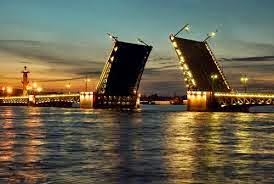
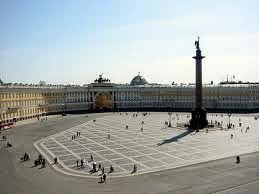
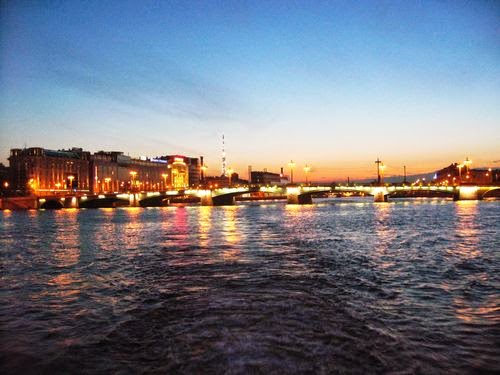
.jpg)


.jpg)





